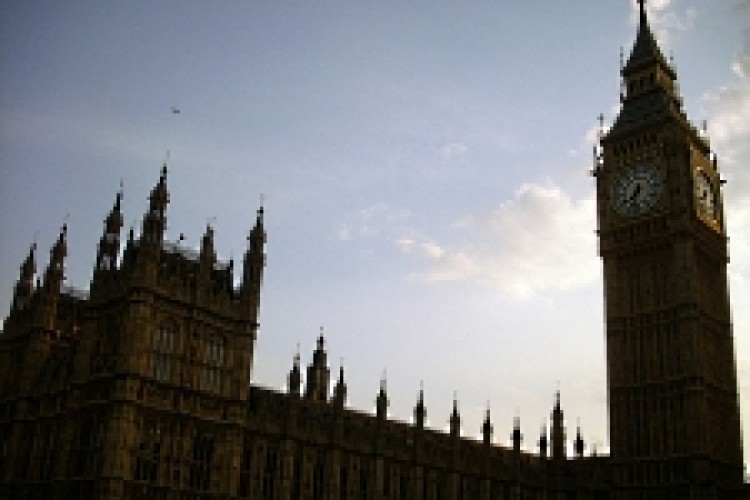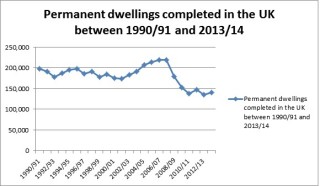For the first time in British history, we have known the date of the next general election for the past four years. Previously, a government could call an election at any time within a five-year term that best suited its own prospects.
Since the Fixed-term Parliaments Act 2011, general elections are held on the first Thursday in May every five years, bar a motion of no confidence or a two-thirds Commons majority for an election to be called early.
That reform seemed like a good idea at the time. An unintended consequence, however, has been to drag out the campaign; electioneering used to last just a few weeks but now it seems to have gone on for months.
Therefore the battleground has been well rehearsed, even if the lines between the major parties are not always as clearly drawn as they once were.
There is little talk these days about the merits of public versus private ownership or the nuclear deterrent. Instead the main choice seems to between deeply painful but moderately effective spending cuts and slightly less painful but probably less effective spending cuts. Perhaps this is why the old Conservative-Labour duopoly is being eroded and nationalism is on the rise. The Scottish National Party (SNP) looks set to cause damage to Labour in Scotland and the UK Independence Party (UKIP) to do the same to the Tories in England. Despite occasional head-banging, there is no longer clear water between the reds and the blues. The major dividing issue is whether we want to be part of a greater political entity, be it the British union or the European one, or do we prefer independence to the team ethic.
While this single issue is certain to determine the voting behaviour of some, most are more likely to be motivated by self-interest. They will vote for the party that they believe is the most likely to pull off that impossible trick of improving both public services and personal finances. After all, we all want more pay, lower taxes, better schools and hospitals, less traffic and safer streets. Within the context of that debate, construction and infrastructure are at the very centre.
There are a couple of Labour manifesto commitments of strong interest to the construction industry, namely an end to umbrella companies and a full public inquiry into the blacklisting scandal, but despite their undoubted importance these are unlikely to attract much excitement from the wider voting public. Much bigger issues are housing, energy and transport – hot, thorny issues. Let’s look at each in turn.
Housing
There is broad consensus that the UK needs to be building 220,000 new homes a year. We were building this sort of amount between 2005 and 2008 but then came the economic crash, followed by the Coalition spending squeeze. UK house-building reached a new 60-year low in fiscal 2013, with just 135,570 completions. Last year 140,860 permanent dwellings were completed in the UK – an increase of 4% but still at a level that exacerbates rather than eases the housing shortage. Empty-nest syndrome used to be something to be suffered; for many now it is now merely dreamed about.
Labour shadow chancellor Ed Balls told the National House-Building Council’s annual lunch in 2013 that Labour had learned from its mistakes and would put house-building at the centre of its economic policy should it win the election. “You might say that Labour did not move early enough to put house building at the centre of our economic policy when we were in power. You’d be right to say so. When we came into office in 1997, our priority was to tackle the huge backlog in housing repairs.” This time, he said, Labour would have a target of 200,000 new homes a year being built by 2020.
Labour has a three-pronged policy: seize land from developers who sit on land that has planning permission and do not build quickly enough; ensure new homes are advertised in the UK before being promoted to overseas investors; and promote new towns and garden cities.
According to this analysis, insufficient new homes are being built because developers are hoarding land and the homes that they do build are being snatched up by foreigners. House-building companies take issue with the first point and argue that there is no evidence of this happening; they are building as fast as they can find bricklayers to lay bricks, they say. On the second point, the property that is being snapped up by foreign investors is largely the seven-figure properties in central London, like at Battersea Power Station. This may indeed be a bad thing from a planning perspective – empty ghost town districts are turning London to honeycomb as the investors have no intention of living in these properties – but the housing shortage is at the first-time buyer end of the market, not the top end. The rich can take care of themselves. Labour presumably is not saying that it wants London to cease being attractive to foreign investors.
Whoever wins the next election will be under exactly the same pressures as the current government and is likely to respond in the same way (unless it is UKIP, under whom population growth may reverse…). It is safe to state that the next government will try to manage the economy competently to keep as many people in jobs as possible, to minimise welfare payments, maximise tax revenues, maximise people’s ability to buy or rent their own home, and seek to iron out wrinkles in the planning system to smooth the way for wealth-creating private sector developers. House-building will continue to be focused in targeted development areas, such as the new garden cities of Ebbsfleet in North Kent and Bicester in Oxfordshire and government agencies will gently try to steer growth, as far as they are able, away from London and towards other cities.
Energy
There is a similarly broad consensus that the next government will also have to prioritise construction of power generating capacity.
Labour leader Ed Milliband’s previous job in Gordon Brown’s government was secretary of state for energy and climate change, so he knows something of the topic. Labour has a 10-point action plan that touches certain electorally erogenous zones – creating ‘a tough new energy watchdog’, for example, and simplifying tariffs to make it easier to compare prices – but there will be no significant change of direction. We hear politicians of the right tilt at windmills and deny climate change; and we still hear politicians of the left call for an end to nuclear power. But the mainstream recognises that we need as much smoke-free energy generating capacity as we can afford to build. Both nuclear and renewables will continue to be supported, although there could be some tinkering at the edges.
The big headline grabber for the next secretary of state for energy will be the official start of construction of EDF’s £16bn Hinkley Point C (HPC) nuclear power station. Full planning permission was secured two years ago but EDF is still negotiating with its Chinese financial backers. The contracting joint venture of Bouygues Travaux Publics and Laing O’Rourke (BYLOR) is already on site waiting to start pouring three million tonnes of concrete, placing 250,000 tonnes of steelwork and shifting five million cubic metres of rock and earth. Despite EDF having already spent millions to get HPC to the starting gate, there remains no certainty that it will go ahead.
Energy policy, therefore, is dangerously exposed to the whims and priorities of foreign state owned organisations, be they French power companies or Chinese banks.
It could equally be knocked sideways by a coalition partner. Early polling has suggested that not only is no party heading towards an overall majority at the election, but a coalition could be much trickier to achieve this time around if the Liberal Democrats are severely culled, as polls indicate. If the Greens have a good campaign, their current 6.5% support in the polls could conceivably, at an outside shot, translate into it picking up another MP or two to join the lonely Member for Brighton Pavilion, Caroline Lucas on the green benches. Even a caucus this small could be enough to hold sway and prop up a minority government in return for a shift in energy policy.

Transport
Perhaps the toughest choices for the next government are in the transport arena, with the HS2 high speed rail network and a decision to be made on airport runway capacity. In both cases it is a case of damage limitation, politically speaking, because opposition to construction in each case is much fiercer than support. For the most part, those whose property is not directly impacted are generally either neutral or in favour of building both a new high speed north-south rail network and increasing aviation capacity in southeast England, although many question whether the £50bn cost of HS2 can be justified. The problem is that a lot of people, in each case, are (or feel they are, and therefore are) directly impacted.
HS2 is one of those projects that both major parties officially support but free reign is given to local candidates to adopt their own local position to minimise electoral damage. Labour has huffed and puffed about how the Coalition has cack-handedly let costs get out of control and failed to make the case for the project properly but it is unable to oppose the project because a core purpose of HS2 is to benefit the Labour-dominated north of England. Labour already appears to have lost Scotland; it cannot risk alienating the north of England as well.
Construction of HS2 is on course to start in 2017 and as that date nears protests will doubtless get louder and fiercer.
Making the secretary of state for transport seat even hotter is the thorny topic of runway capacity. The coalition government recognised early after the last election that it had to make a decision on whether to allow Heathrow Airport to build a third runway, demolishing 850 homes, or to steer expansion to elsewhere in the southeast. Any decision was bound to be hugely controversial but do nothing was clearly not an option – so it went for the ‘do nothing yet’ option of appointing a commission under Sir Howard Davies to review options. Over the past three years the Davies Commission has consulted and reviewed and drawn up shortlists and finally decided that it is a straight choice between Heathrow and Gatwick. Its final recommendation will land on the secretary of state’s desk in the summer. It will be a brave minister that resists the temptation to find further long grass and instead actually makes a firm and final decision.
Infrastructure planning
So tough are these decisions that there are calls for changes to be made in how they are made. In October 2012 shadow chancellor Ed Balls commissioned engineer Sir John Armitt, former chairman of the Olympic Delivery Authority, to undertake an independent review of long term infrastructure planning in the UK. He was tasked with looking at whether a new institutional structure could be established that better enables the long-term decision-making that strategic infrastructure planning requires; and how political consensus might be forged around these decisions.
Armitt proposed a National Infrastructure Commission to identify the UK’s long-term infrastructure needs and monitor the plans developed by governments to meet them. It would do for infrastructure what the Office for Budget Responsibility does for the Treasury – namely, provide expert support for unpopular decisions and prevent politicians from dodging them. It would set out a 30-year plan that parliament would be required to vote upon every 10 years.
Armitt told Balls: “Some of those with whom I have discussed my ideas have commented that I am trying to ‘take the politics out of infrastructure’. This in fact is the opposite of what I intend. Rather than taking power away from politicians, I believe an independent National Infrastructure Commission would act as an important enabler and provide a robust framework within which public and political debate on these important issues could take place.
“Decisions around major infrastructure are invariably controversial. It would therefore be of great help to politicians to have detailed independent expert evidence on hand as to why major investments are necessary and what the real consequences are for day to day life if critical infrastructure issues are not addressed.”
Although some felt Armitt was only adding to bureaucracy with a new quango, his proposals attracted support from such bodies as the Institution of Civil Engineers (perhaps unsurprisingly, since Armitt becomes ICE president this year). His plan was adopted as Labour party policy and draft legislation has already been written by law firm Pinsent Masons ready for a Labour government to introduce.
More recently, however, support for the National Infrastructure Commission has weakened amid concern that everything might grind to a halt for a couple of years while the commission gets its act together. After all, the government already has a national infrastructure plan.
In 2013 ICE director general Nick Baveystock wanted an independent infrastructure commission, saying: “We support Sir John’s proposals and hope they are adopted by the main parties.”
By 2015 the ICE had back-tracked, saying: “ICE agrees with the Armitt Commission’s fundamental analysis of the issues holding back UK infrastructure development. The need for an independent body and the proposed commission’s remit rightly centres on a set of solid, UK-wide infrastructure goals. However, ICE believes the goals could also be achieved by building on existing arrangements, rather than creating an entirely new entity. Restructuring HM Treasury’s Infrastructure UK into an independent infrastructure body, established through an Act of Parliament, would have the benefit of it being operational more quickly, reducing transition time. It would build on the infrastructure policy foundation already laid to avoid losing momentum.”
The ICE had clearly been studying recent history, which has already seen chopping and changing.
Infrastructure UK was set up by the Conservative-led coalition government in 2010 to improve planning and prioritising investment in infrastructure. It does little to set the agenda; rather, it seeks to implement decisions already taken by government. But the ICE now believes it is better to fix it than bin it.
The Infrastructure Planning Commission (IPC) was established by the previous Labour government in 2008 as a non-departmental public body responsible for the examining, and in some circumstances making decisions on, planning applications for nationally significant infrastructure projects in England and Wales. The coalition government's Localism Act 2011 abolished the IPC. Applications for development consent are now handled by a new infrastructure planning unit within the Planning Inspectorate.
Horse-trading and compromise
Of course, all polls indicate that we are heading for either another coalition government or a minority government that relies on support from the smaller parties on a vote by vote basis. This means that there is really no knowing what manifesto commitments might be deliverable. The best laid plans could easily be derailed through horse-trading with Nigel Farage’s UKIP or, more likely, Nicola Sturgeon’s SNP.
Got a story? Email news@theconstructionindex.co.uk




.gif)
